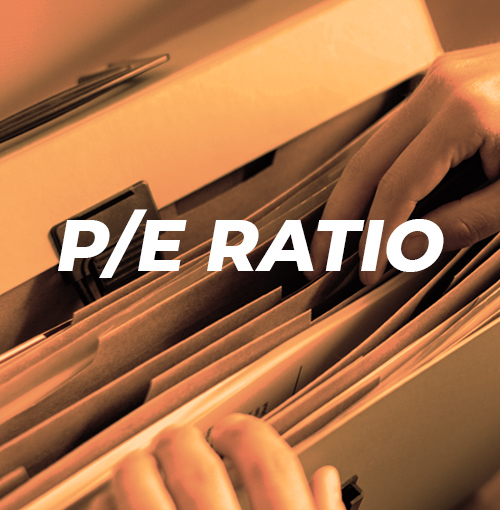
Secrets of the Price-To-Earnings P/E Ratio: Valuation Tool for Investors
When stepping into the vast world of stock investing, you'll likely encounter a barrage of financial metrics designed to help you assess an investment's potential. One of these key metrics, the Price-to-Earnings (P/E) Ratio, has long been a fundamental tool in the arsenal of investors. However, like any tool, its usefulness greatly depends on how well it is understood and applied. The crucial question remains: Is the P/E ratio a reliable measure of a stock's value? Let's dive deep into the enigma of P/E Ratio, breaking it down to better understand its role, reliability, and relevance in today's dynamic investing environment.
Breaking Down the P/E Ratio
The Price-to-Earnings ratio acts as a yardstick, comparing the price of a company's shares relative to its earnings. It’s a measure of how much investors are willing to pay for a company’s earnings. Two variants exist: the Trailing P/E and the Forward P/E. The former uses the current share price divided by the past year's earnings per share (EPS), while the latter divides the current share price by the forecasted EPS for a future period.
Let's clarify this with a fresh example. Say, a company named Widget Corp. has a current stock price of $15 and an EPS of $1. The P/E ratio, in this case, would be 15 ($15/$1). Suppose the EPS rose to $1.5, while the stock price remained at $15, the new P/E would be 10 ($15/$1.5), signifying a more appealing valuation as investors are getting more earnings for the same price.
However, a lower P/E ratio is not always a positive sign. Imagine if Widget Corp.'s stock price dropped to $5 per share and its EPS also declined to $0.50. The P/E would then be 10 ($5/$0.50). While ten is a lower P/E, this lower valuation could indicate financial turbulence for the company.
Important: The P/E ratio depends on a company's financial performance, which can be influenced by numerous factors, including market conditions and management decisions.
A high P/E ratio, on the contrary, may indicate an overvalued stock. However, it can also signify a company's growth, as seen when both the stock price and EPS are on the rise. Ascertaining whether a company's P/E ratio represents a good valuation often requires comparison to other companies within the same industry.
Is There an 'Ideal' P/E Ratio?
Investment maestro Benjamin Graham once suggested that a P/E ratio of 16 represents a "moderate upper limit" for investment in common stock. However, he cautioned against treating P/E ratios as a universal measure of value. According to Graham, different industries trade at varied multiples based on their actual or anticipated growth potential.
These notions of a "good" P/E ratio have evolved over time and are subject to the changing dynamics of the market. For instance, during the dot-com boom of the late '90s, sky-high P/E ratios were the norm, diverging significantly from Graham's upper limit.
Tip: Look at the P/E ratio as one tool in your toolbox. It is useful for comparing companies within the same sector, but not across different sectors.
Accuracy of P/E Ratio: A Matter of Debate
Despite being a traditional valuation tool, the P/E ratio isn't without its critics. William J. O'Neill, founder of Investor's Business Daily, argued that P/E ratios don't always accurately predict price movement. He demonstrated this by showing that the top-performing stocks from 1953 to 1988 had a higher average P/E ratio than the Dow Jones Industrial Average.
This observation challenges the theory that stocks with high P/E ratios eventually revert to industry norms. Historical data shows that there can be major discrepancies between theory and practice, with high P/E stocks soaring even as their lower P/E counterparts remain stagnant.
Remember: The P/E ratio doesn't consider the financial health of a company, so it should be used in conjunction with other financial metrics.
Can We Refine the P/E Ratio?
Despite the criticism, it's important to note that the P/E ratio, when employed judiciously, can provide valuable insights. A refined approach involves examining P/E ratios over extended periods, taking into account forward-looking data such as earnings estimates and macroeconomic conditions.
Unveiling the Core of the P/E Ratio
The crux of the P/E ratio is its ability to gauge a company's valuation by juxtaposing the prevailing stock price against its earnings-per-share (EPS). Here, earnings are interchangeable with net income or profit, while EPS is the outcome of dividing net income by the total number of a company's outstanding equity shares.
Let's consider a new example. Suppose there's a company whose stock price stands at $30, and it has an EPS of $1.50. Consequently, the company's P/E ratio would be 20 (i.e., $30/$1.50). Now, if the EPS appreciates to $2 while the stock price is constant at $30, the P/E ratio would fall to 15 (i.e., $30/$2), thereby indicating a more attractive or conservative valuation.
However, a lower P/E ratio isn't always a promising signal. If the same company's stock price plummets to $6 per share and its EPS concurrently shrinks to $0.30, the P/E ratio would reduce to 20 (i.e., $6/$0.30). Although 20 is lower than the earlier P/E ratio, it might also suggest the company is grappling with financial distress, reflected in the reduced EPS and low $6 stock price.
Important: While calculating P/E, remember that earnings per share (EPS) can vary based on the accounting methods used.
Conversely, a soaring P/E ratio might suggest a company's stock price is inflated. However, an elevated P/E ratio could also imply that a company is witnessing growth, reflected in the simultaneous rise of the stock price and EPS. Therefore, it is crucial to compare a company's P/E ratio with those of other companies in the same industry to assess whether the valuation is fair or not.
Understanding the Significance of the P/E Ratio
In "Security Analysis," a book by Benjamin Graham published first in 1934, the author suggests a P/E ratio of 16 as a reasonable maximum for a common stock investment.
However, does that imply that all companies with a P/E ratio of 16 are of equal value? The answer is no. Graham acknowledges that a company with a higher current earnings than average or one with promising prospects might justify a higher valuation.
It's crucial to note that Graham didn't consider P/E ratios as an absolute metric of value, but as a benchmark for establishing a "moderate upper limit." He further underscored the variance in multiples among different industries based on their perceived or real growth potential.
Interesting Fact: The P/E ratio is often called the "multiple" because it shows how much investors are willing to pay per dollar of earnings.
Evolution of the "Good" P/E Ratio Over Time
Interestingly, the notion of this "moderate upper limit" became obsolete, especially after the dotcom boom of the late '90s, when investors raced to buy any stock with a ".com" suffix. Some of these companies had P/E ratios so high that they were best expressed using scientific notation.
Notably, even before the dotcom bubble, many thought that comparing a stock's price to its earnings was at best myopic and at worst futile. According to William J. O'Neill, the founder of Investor's Business Daily and author of "How to Make Money in Stocks," P/E ratios don't always paint an accurate picture.
He indicated that from 1953 to 1988, the stocks that performed the best just before their value shot up had an average P/E ratio of 20, compared to the Dow Jones Industrial Average's (DJIA) P/E ratio of 15.2 for the same period. Hence, by Graham's standards, these supposedly reliable and mature stocks were overvalued.
Fact: The P/E ratio can forecast future stock prices to some extent. If earnings increase while the stock price remains constant, the P/E ratio will decrease, potentially leading to a higher future stock price.
In theory, stocks with high multiples will eventually revert to the industry average, and vice versa for stocks with low earnings-based valuations. However, this hasn't always been the case. There have been times when high P/E stocks kept soaring while their cheaper counterparts remained stagnant.
Over the last two decades, there has been a gradual increase in P/E ratios, despite the stock market volatility remaining unchanged. As per data presented by Yale University Professor Robert Shiller in his 2000 book "Irrational Exuberance," the price-earnings ratio for the S&P 500 Index reached historic highs in late 2008 through the third quarter of 2009, despite the unusually high investment ratios.
Can the P/E Ratio Be Re-calibrated?
So, was O'Neill correct in assuming that P/E ratios lack predictive value? Or that, in the contemporary technology-driven economy, the ratios have become passé? Not necessarily. The key to harnessing P/E ratios effectively, according to many experts, is to assess them over longer durations and incorporate forward-looking data, such as earnings estimates and overall economic conditions.
Enter the Price/Earnings-to-Growth (PEG) ratios, a similar metric to P/E ratios but divided by annual EPS growth to normalize the metric. If a company has a P/E of 10 and a growth rate of 5%, for instance, its PEG ratio would be 2. The premise behind PEG ratios is that higher growth prospects justify a higher P/E ratio. Therefore, if two companies have the same P/E ratio, the one with a higher growth rate, i.e., a lower PEG ratio, is a better bargain as it offers more growth per unit cost.
Tip: When the P/E ratio seems too good to be true, dig deeper. High debt or low growth rates may be lurking behind an attractive P/E ratio.
Frequently Asked Questions
Can the P/E Ratio Be Trusted?
While P/E ratios offer valuable insight into a company's valuation, they are not infallible and should be used in conjunction with other financial indicators and market factors for a more comprehensive investment decision.
Is the P/E Ratio Always Accurate?
The P/E ratio can be a useful gauge of a company's valuation, but it's not always accurate. Factors such as future growth expectations, market sentiment, and economic conditions can significantly impact a company's P/E ratio, potentially making it misleading.
Why Should Investors Care About the P/E Ratio?
Investors should care about the P/E ratio as it can help them assess whether a company's stock is overvalued or undervalued. It provides an easy way to compare the valuations of different companies within the same industry.
Can High P/E Ratio Stocks Be a Good Investment?
High P/E ratio stocks can be a good investment if the company has strong future growth prospects that justify the higher valuation. However, high P/E ratio stocks also have higher risk, as they need to deliver on the expected growth to maintain their valuation.
What Is a "Good" P/E Ratio?
A "good" P/E ratio can vary depending on the industry and the economic environment. It's best to compare a company's P/E ratio to those of other companies within the same industry to assess its valuation.
What Happens If a Company's P/E Ratio Is Lower Than the Industry Average?
If a company's P/E ratio is lower than the industry average, it could suggest that the market undervalues the stock. However, a low P/E ratio could also indicate that the company has issues that have resulted in reduced investor confidence.
How Is the PEG Ratio Different From the P/E Ratio?
The PEG ratio adjusts the P/E ratio based on a company's expected growth rate. It can provide a more comprehensive view of a company's valuation by taking into account future earnings growth.
Remember: The P/E ratio doesn't account for growth rates. Consider using the PEG ratio, which adjusts the P/E for growth.
The P/E ratio is a versatile tool that can provide insights into a company's valuation and future prospects. However, it's not without its limitations and should not be the only metric used when making investment decisions. A savvy investor should always take into account other financial indicators, company fundamentals, market conditions, and economic trends.
Investing is an art that demands a combination of analysis, judgment, and occasionally, a bit of good fortune. Understanding the P/E ratio and how it interacts with other financial metrics is one piece of the puzzle that can lead to better investment decisions.
- Share this article


